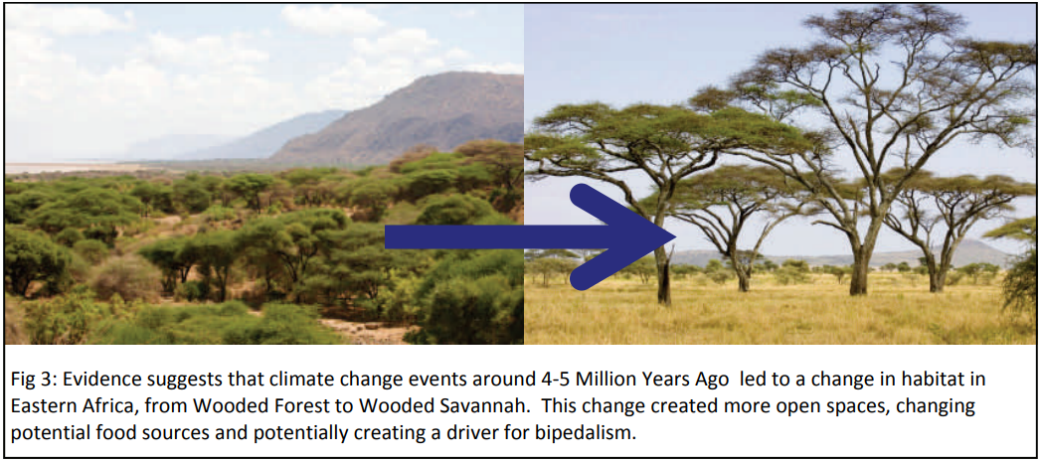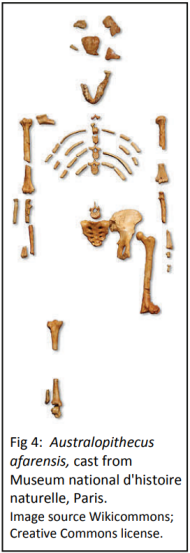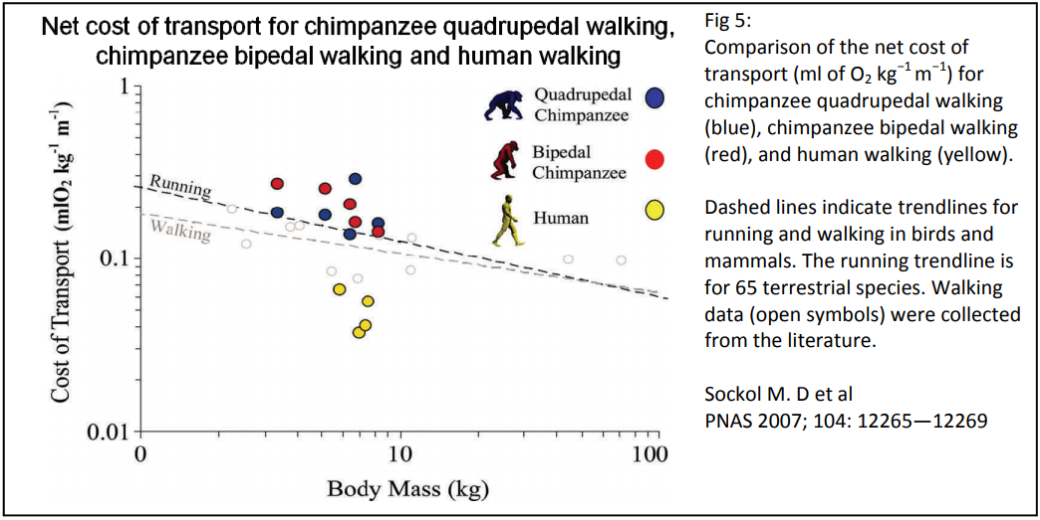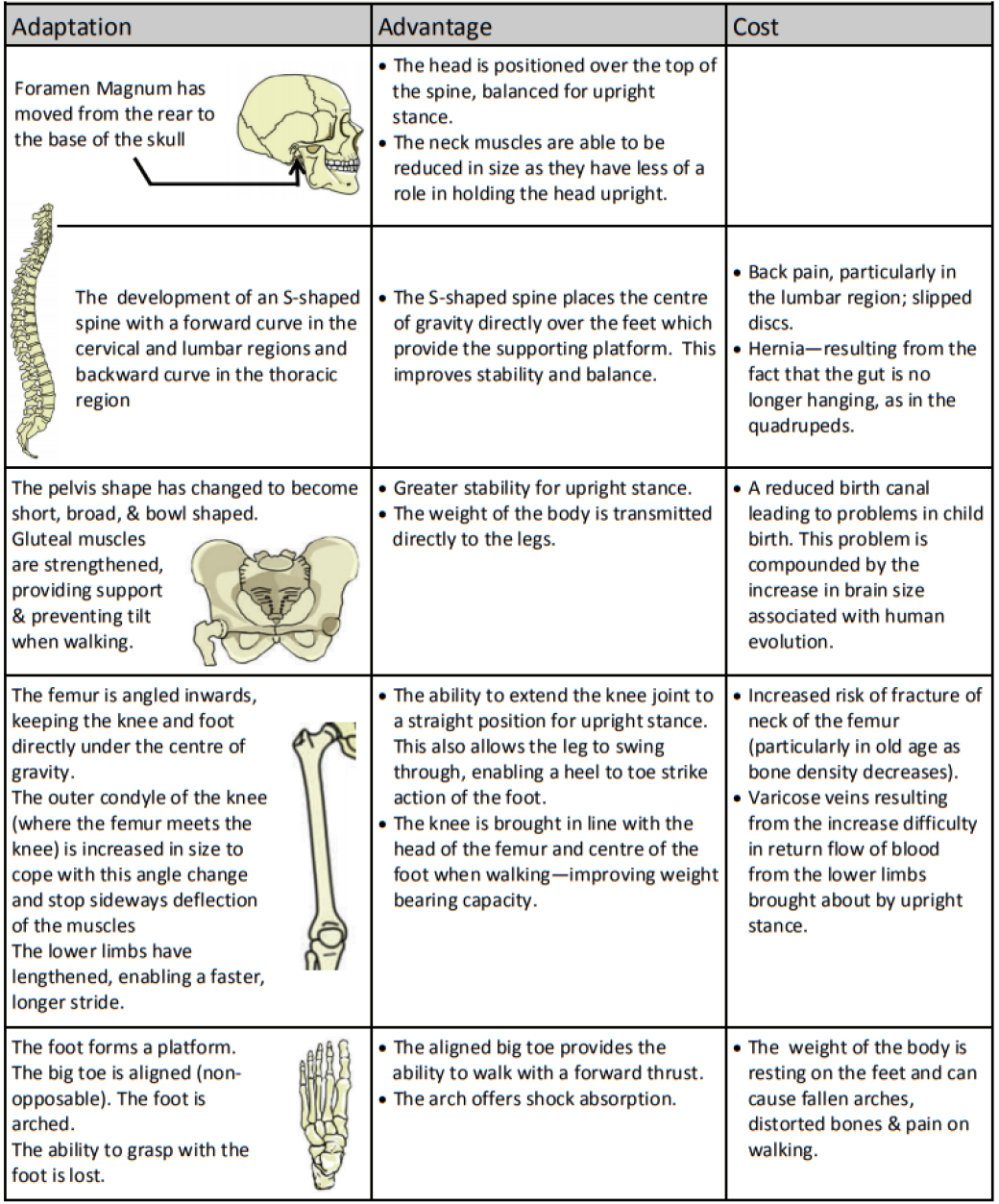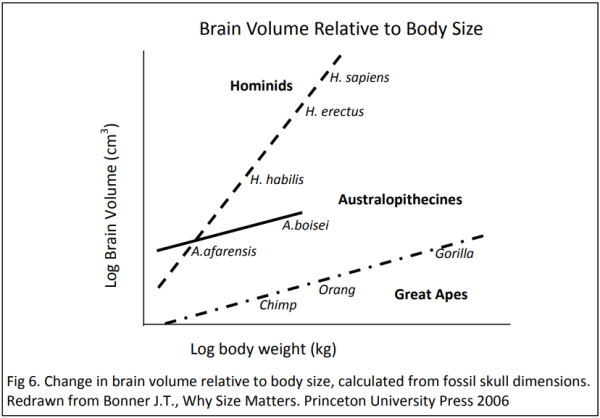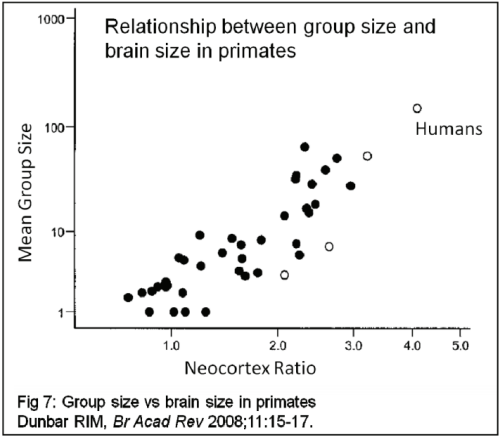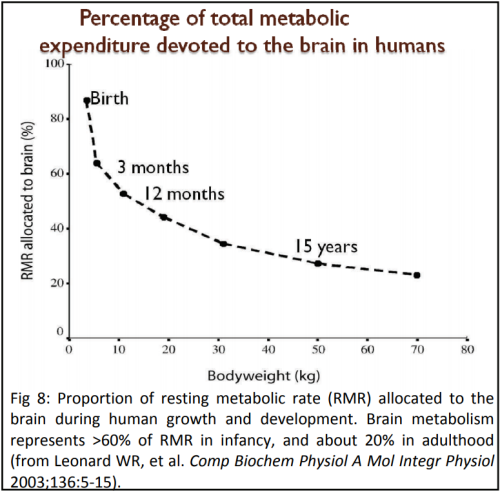Bipedalism
Evidence from the fossil record suggests that some bipedal tendencies were present as far back as Orrorin tugenesis (6MYA). There is some possibility that O. tugenesis was not in fact in the hominin line, suggesting either that bipedalism evolved in more than one taxa or that bipedalism had started to develop before the split between the last common ancestor of apes and humans. The well known female Australopithecus afarensis skeleton, “Lucy” (Fig 4) is dated three million years ago and is believed to have been habitually bipedal, adapted for bipedal walking but not able to run efficiently. A. afarensis existed from 4‐3MYA so Lucy was a relatively late example of this species. Evidence from earlier fossils of A. afarensis show that some arboreal behaviours were also part of the niche of A. afarensis, suggesting that this was the period of gradual evolution from quadrupedal to bipedal locomotion.
Selection for bipedalism in this period must have offered survival advantages to the species, which are likely to have resulted from changes in the environment which made this form of locomotion preferential.
Evidence suggests that selection for bipedalism was driven by environmental change seen in eastern Africa around 4MYA in which near continuous forest changed to wooded savannah, creating more open habitats in which food resources became more dispersed (Fig 3). In such habitats, bipedal movement is energetically more efficient than quadripedal movement, particularly at walking speeds. Calculations of the net costs of transport for different gaits (Fig 5) show that human walking is more efficient than most other forms of locomotion in animals (Sockol et al 2007). The paleoanthropologist Robert Foley has calculated that, provided the early hominid spent the majority of its time in terrestrial (as opposed to arboreal) foraging, then bipedalism would be adaptive in such environments. Thus the evolution of bipedalism can be seen to have been progressively adaptive as the hominin line evolved, driven by habitat change.
Other arguments that have been put forward for the origin of bipedalism include:
- Improved thermoregulatory efficiency, leading to the ability to forage through the heat of the day
- Improved ability to see and therefore avoid predators
- Improved ability to carry food, tools and infants during their period of dependence
These adaptations are likely to be secondary to the drive for selection based on energetic efficiency, and could have arisen from the initial adaptation of standing upright and adopting a bipedal gait. While bipedalism was selected for and therefore had adaptive advantage, it also had adaptive costs that resulted from the structural changes that are associated with the upright posture and bipedal gait, as shown in the table below.

